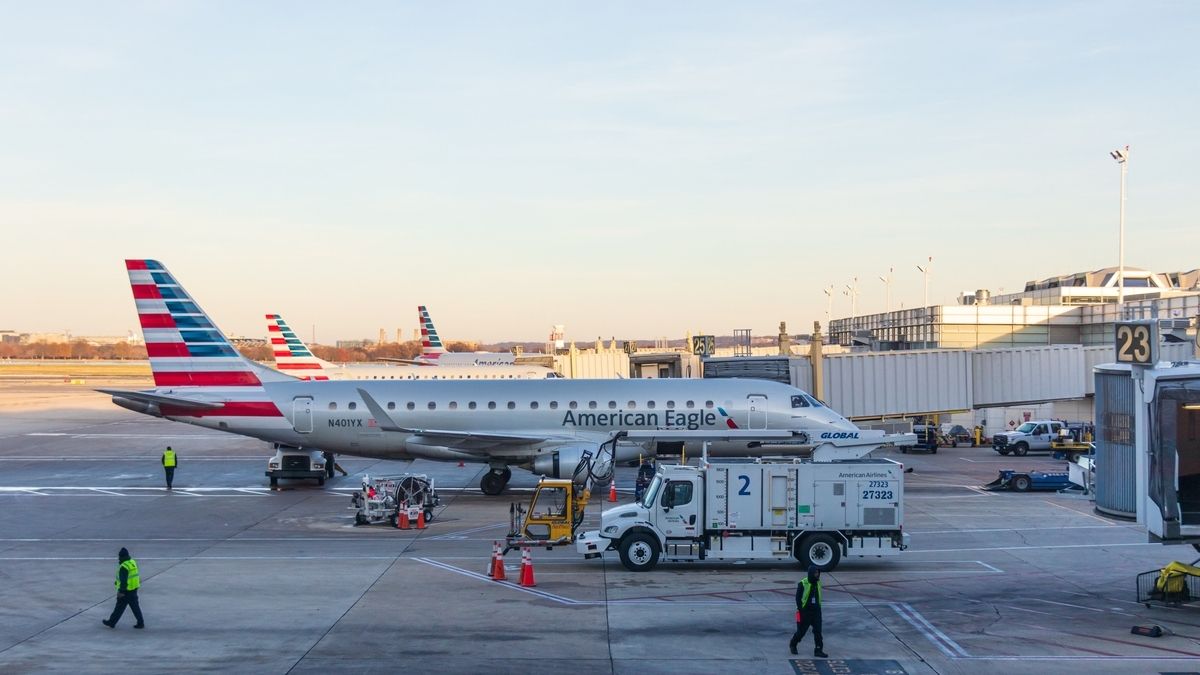US Mainline Airlines Opt for Regional Partners: Strategy Behind Outsourcing Flights

Have you ever noticed the name of the operator on your US regional airline ticket or boarding pass? The three big airlines; American, Delta, and United outsource their regional flights to smaller airlines. Airlines such as Envoy Air, Mesa, PSA Airlines, and Air Wisconsin operation regional flights on behalf of the major US carriers.
Who flies for these airlines?
American Airlines perhaps has the most complex regional operational model. Its American Eagle brand has three carriers from its own group as well as third-party contracts with three further providers.
From its own group, it uses around 160 airplanes, all Embraer, from Envoy Air, just shy of 60 Embraers from Piedmont and 130 or so CRJs from PSA Airlines. Third parties working with the airline include 60 airplanes from Mesa (Bombardier CRJ900s), over 100 Embraers from Republic Airways and 80 Bombardier and Embraer aircraft from SkyWest. All in all, this makes for a fleet just short of 600 regional aircraft.
Delta relies on three carriers for its Delta Connection regional flights, working with Endeavor Air, Republic Airways and SkyWest Airlines. The largest fleet is from Endeavor, with over 180 airplanes flying, all CRJs. Republic utilizes just over 50 Embraers, while SkyWest has a mixed fleet of ERJs and E-Jets totaling just short of 150. The complete regional fleet is just a few planes, fewer than 400.
United’s regional brand, United Express, is served by airplanes from six different carriers. These are Air Wisconsin, CommutAir, GoJet, Mesa, Republic and SkyWest. Between their various fleets of Embraer E-Jets and Bombardier CRJs, these carriers put in 555 planes worth of capacity to the mainline carrier.
Why subcontract?
You would think that, given that these regional airlines are turning a profit from their operations on behalf of the mainline carriers, the big airlines would be keen to keep that profit for themselves. But they don’t – why not? Simply put, this is all about cost-effectiveness.
There are multiple aspects of subcontracting a regional operation that makes it financially attractive to the mainlines, such as:
- Avoiding fleet complexity: Although the big airlines already have fairly mixed fleets, they tend to stick with Boeing and Airbus. Adding in small jets like Embraers, CRJs and suchlike adds a whole new level of complexity to the fleet, adding new requirements for spares, technicians, pilots and everything else. It’s far more cost-effective to leave a regional specialist to run those small planes, and focus on the larger sized fleet.
- Right-sizing the operations: While major airports get all the attention, there are hundreds of smaller facilities around the US that are vitally important to their local communities. The population in the catchment area is not large enough to sustain service from even the smallest airplanes in the mainline fleet, but it can work with smaller regional jets, taking us back to the point above.
- Paying lower wages: While it’s not the nicest aspect to think about, it is a factor worth mentioning – pilots (and other staff) at regional airlines get paid significantly less than their mainline counterparts. If the regional operations were conducted by mainline staff, they would have to be paid on the same scale as the rest of the workforce. By using a regional subcontractor, the wages can be lowered and, therefore, the operations are carried out at a smaller cost.
There is a downside to this practice of subcontracting, however. Major airlines have been required to enter into scope clauses with the trade unions of their pilots which effectively limit the number of size of aircraft flown by the regionals. This has been put in place to save union jobs, so that jobs at the main airline don’t end up being outsourced to the cheaper, regional carriers.
Global Perspective
This has influenced the fleet choices of the regionals, as well as even swaying the aircraft types on offer from the OEMs, such as the CRJ550 which was specifically designed to be scope clause compliant. Nevertheless, the model of outsourcing regional operations is working well for US airlines.
Do you know of any other parts of the world where this type of strategy is in use?



